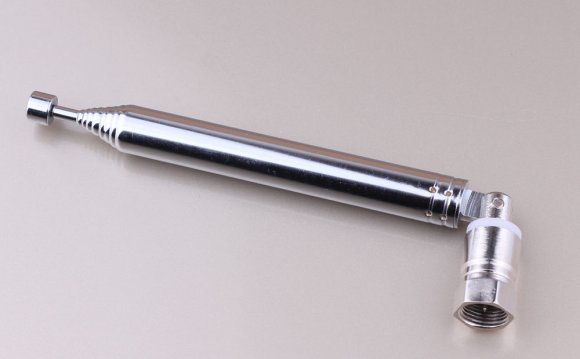
- Is appropriate for the signal strength in your area. Signal analysis sites such as AntennaWeb.org and TVFool.com can tell you exactly how strong an antenna you need to pick up available signals based on your address. Be sure to choose an HDTV antenna that's powerful enough to pull in all the signals you want, but avoid getting more antenna than you need. A too-powerful television antenna can overwhelm a digital tuner if you're in an area with high signal strength.
- Can receive all the channels in your area. Some HDTV antennas are UHF only, which are fine in many areas. However, if your local broadcasters elected to stay on their original channels rather than move to UHF, you need an antenna that covers both the VHF and UHF channels. This a particular challenge in those few areas where a broadcaster is still using channels 2-6.
Know before you go
What channels can you receive? An important first step in selecting an HDTV antenna is learning what signals you can receive at your home and how strong they are. A few websites can analyze virtually any address in the U.S., using factors such as distance to the transmitter and local topography to give a fairly reliable prediction of what to expect in terms of reception and how powerful an antenna you'll need. Sites like TVFool.com and AntennaWeb.org do an excellent job.
AntennaWeb.org produces a color-coded chart that matches the Consumer Electronics Association's (CEA) color rating scheme for antennas, which makes picking one - particularly for outdoor use - easier. TVFool.com deals more directly with indoor TV antennas than AntennaWeb.org, but uses its own color scheme instead of the one developed by the CEA.
Some complain that AntennaWeb.org is too conservative in its predictions of what stations you can receive, which the site itself admits to. However, that's a means of avoiding disappointment because many factors can negatively impact TV reception beyond what these sites can account for. If AntennaWeb.org says you can receive a certain channel with an antenna of a certain power, the odds are excellent that will be correct. Any additional channels you receive may be a welcome bonus.
In addition to considering available signals, determine the directions they come from, which is information also provided by AntennaWeb.org, TVFool.com and similar sites. In most places, most signals will come from the same general direction, but there could be signals from other directions that are receivable and desirable. In some locales, the best signals might come from a completely unexpected direction, such as transmitters in towns or cities that are farther away but that come in clearer due to nearby topography. That's important, because some antennas are highly directional while others receive signals equally or acceptably well in multiple directions.
Will an indoor antenna work where you live? When considering an indoor antenna, be realistic about what you can receive at your location. In analog broadcasting, weaker stations were sometimes received with acceptable picture quality as long as you were willing to put up with a touch of static. That won't work with digital TV signals. Because of the nature of digital signals, you'll either see a terrific picture, a picture that cuts in and out with annoying regularity, or nothing at all. If the predictions at AntennaWeb.org or TVFool.com say an indoor antenna won't cut the mustard, it won't.
Do you need a directional TV antenna? In the old analog system, weaker echoes of the original signal that are caused by reflections off of buildings or other obstacles showed up as ghosts. In digital broadcasting this type of "multipath" interference can render a signal completely unusable, even in areas where signal strength is very high. If you live in an area with lots of tall buildings or tall natural features such as hills, a directional antenna is likely the way to go. Otherwise, an omnidirectional antenna will work fine, and won't need to be repositioned to receive signals coming from different locations.
Can a television antenna amplifier help? While some TV antennas include built-in signal amplifiers, you can add an external amplifier to just about any passive or unamplified antenna. In fact, the CEA says adding an amplifier to a large directional outdoor television antenna is the surest way to receive the weakest signals.
That said, adding an amplifier to a TV antenna isn't always the best course of action. An amplifier can actually harm reception in areas where signal strength is already decent because a too-strong signal can overload a digital tuner. Amplifiers also amplify noise along with the intended signal, which may result in no real improvement in the case of very marginal signal strength.








